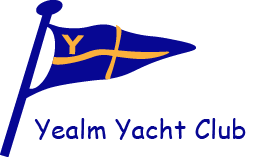Yacht Racing – Risk Assessment
1.0 Purpose
The purpose of this document is to assess the risks associated with Yacht racing and confirm that the risks are mitigated to an acceptable level..
2.0 Scope
The scope of this document covers all the Yacht racing carried out by the Yealm Yacht Club in Wembury Bay, in the South West Coastal waters and across Channel.
3.0 Responsibility
The direct responsibility for the safety of participants in Yacht racing lies with the participants themselves. However, the Yealm Yacht Club has a duty of care to ensure that the racing is carried out in a safe and organised manner.
Within the Club the responsibility for the production of the Risk Assessment and the provision of sufficiently qualified and experienced people and equipment to effectively manage the racing lies with the Club Officers, Sailing Committee and the individual Race Officers.
For each Race the Race Officer and his Race Management Team are responsible for the safety and good management of the race and to carry out any actions required by the Crisis Management Plan should these be required.
4.0 Risk Assessment
The risks associated with Yacht racing are considered in the table below. This includes an assessment of the risks encountered and relates to the probability, possible consequences and mitigation in place. The risk should be at least ACCEPTABLE for racing to take place.
Risk Assessment Form: Offshore Races (Yachts)
| Hazard | Risk | Control Measure |
The environment i.e
|
|
2.1 A boat is entirely responsible for her own safety as specified in the Sailing Instructions and Declaration including Legal Liability Statement in the Entry Form which requires acceptance before Racing. This is in accordance with The Racing Rules of Sailing 2017-20 (RRS) & World Sailing Offshore Special Regulations (OSR) 2019-20 (Updated January 2021)
2.2 The responsibility for a boat’s decision to participate in a race or to continue racing is hers alone. 2.4 Each skipper is responsible to ensure that the boat is seaworthy so as to be able to face extremes of weather and that the safety equipment is properly maintained, stowed and in date and that the crew know how to use it. The OSRs provide guidance regarding the stability requirements for vessels in different categories of racing. Much of the OSRs are concerned with the equipment that should or recommended to be provided according to the Category of the race. RYA Sea Survival and RYA VHF/DSC Courses strongly recommended. Further recommendations regarding offshore personal survival are available at OSR. |
| Rocks/obstructions
Proximity to other vessels (eg TSS, fishing) |
|
See Sailing Instructions, specifically the need for yachts to comply with port regulations (Dockyard Port of Plymouth)
1.5 The requirement to lodge and update the data in the RYA SafeTrx Database which contains information which the Coastguard can access in an emergency 1.6 Entrants to familiarize themselves with all hazards (particularly rocks, obstructions and shipping movements planned or otherwise) associated with the race area. Note: It is a requirement, that in all YYC Category 3 races, yachts shall carry a life raft with a valid certificate and that it is of an appropriate capacity for the number of crew. Ref: OSR & Sailing Instructions RYA Sea Survival and RYA VHF/DSC Courses strongly recommended. Further recommendations regarding offshore personal survival are available in OSRs |
| The structure and equipment of the vessel
|
|
See Sailing Instructions and OSRs regarding the stability requirements for vessels in different categories of racing.
RYA First Aid and RYA VHF/DSC Courses strongly recommended. |
| Incapacity of the crew
|
|
See Sailing Instructions
RYA First Aid and RYA VHF/DSC Courses strongly recommended |
| Burns and scalds |
|
It is the responsibility of the boat owner/skipper to ensure that the boat is fully equipped to deal with any incident that may require first aid treatment at any time during the voyage.
See Sailing Instructions RYA First Aid and RYA VHF/DSC Courses strongly recommended |
This assessment is deemed to have reduced risk to the lowest possible level, so far as is reasonably practicable.
References to the World Sailing Special Regulations can be found on the internet here
Original Assessor: Tommy Taylor, Rear Commodore (Sail) YYC, Fred McArthur, Vice Commodore YYC, Martyn Cawse, YYC Member
20th May 2014
Reviewed and updated
April 2018 – Duncan Macpherson, Rear Commodore Sail
June 2019 – Ian Kennedy, Rear Commodore Sail
January 2020 – Ian Kennedy, Rear Commodore Sail
January 2021 – Ian Kennedy, Rear Commodore Sail
